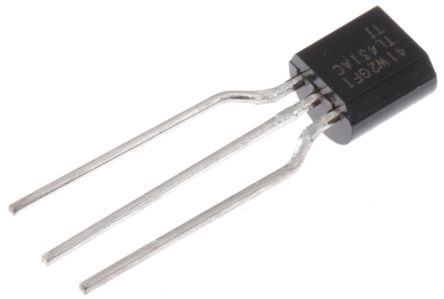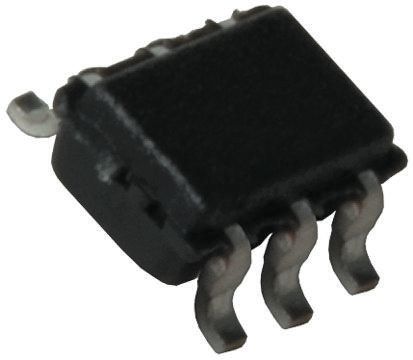
|
What are voltage references?
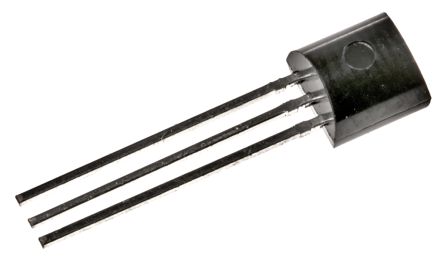 Voltage references are electronic components, devices or circuits that are designed to deliver a constant DC (direct-current) output voltage - in other words, a fixed voltage - irrespective of inconsistencies in other external conditions. These might include such changeable factors as total load on the device, fluctuations in the power supply, temperature, humidity, elapsed time, and a host of other variables. Voltage references are broadly classed as a subcategory of power management integrated circuits (PMICs).
Voltage references are electronic components, devices or circuits that are designed to deliver a constant DC (direct-current) output voltage - in other words, a fixed voltage - irrespective of inconsistencies in other external conditions. These might include such changeable factors as total load on the device, fluctuations in the power supply, temperature, humidity, elapsed time, and a host of other variables. Voltage references are broadly classed as a subcategory of power management integrated circuits (PMICs).
Regardless of the type of circuit or electronics product it’s being used in, the key job of a voltage reference is to provide a consistent standard against which other components in the system can measure their own input voltage. This allows the system to provide a readily comparable electronic ‘translation’ for important analogue metrics such as speed, temperature, pressure and so on.
Voltage references typically provide this ‘known potential’ for as long as the circuit is switched on and drawing power, meaning that other components can measure the types of input signal that are important to their specific roles against a constant standard, and thus accurately interpret them. As such, the most valued characteristics of a quality voltage reference will always be accuracy and stability.
Types of voltage references
While there are many different types of voltage references available on today’s market, the most common core designs - usually referred to as the device’s topography - are the two-terminal shunt voltage reference and the three-terminal series voltage reference. (A third type, the charged capacitor voltage reference, was once a more common standard, but it’s seldom used in safety-critical applications today due to its vulnerability to the sources of ionising radiation frequently encountered in many industrial, laboratory and transport environments).
Note that some voltage references can be manufactured to function in either series or shunt modes.
Of the two-terminal shunt topographies, the most commonly used variety is the Zener voltage reference. When it comes to three-terminal series topography, the most widely used versions are probably the buried Zener and bandgap type voltage references. In the following sections, we’ll look briefly at each of these types, along with several other variants, and the key differences between them.
Shunt voltage references
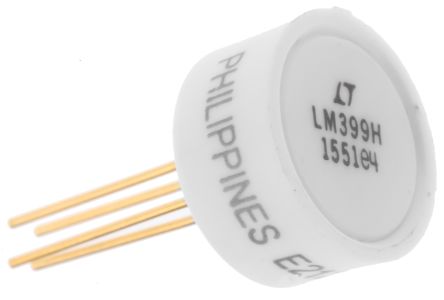
Shunt votage references are two-terminal models designed for operation within a specified current range, where the reference operates in parallel with its load. When not under a load, the shunt reference sinks just enough current to achieve the desired output voltage with regards to voltage drop, but under load it will automatically reduce its sink current to maintain a steady throughput. In essence, a shunt voltage reference maintains its constant voltage output by forcing the sum of [load current + current through the reference] to be fixed and stable.
Therefore a shunt voltage reference will effectively regulate output voltage by altering its sink current to compensate for fluctuations in the load. In practical terms, this methodology is functionally equivalent to that found in a Zener diode, and shunt voltage references similarly display very good stability/accuracy over a fairly wide range of varying current and load conditions, packaged into a PCB footprint that’s small and simple to work with.
Furthermore, shunt voltage references are easy to manufacture as negative voltage references, and they can also be used with both very high and low supply voltages.
General characteristics of a shunt voltage reference:
-
Typically lower operating current than series voltage references
-
As a simple 2-terminal device, the shunt regulator can often be used more flexibly in a wider range of nonstandard circuit configurations
-
Shunt references effectively impose no limit on maximum power-supply voltage, within appropriate power dissipation parameters
-
Power supplies will delivers the same maximum current through a shunt voltage reference, regardless of load, as current flows through both load and reference, dropping voltage to maintain a stable output
Series voltage references
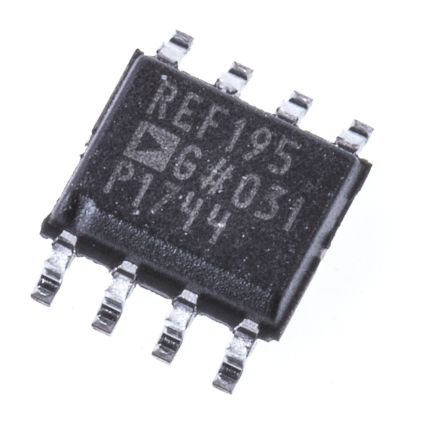
Series voltage references have three or more terminals, and consume a fairly stable supply current over a broad range of supply voltages. A key advantage of the series voltage reference is that they only draw load and current from the input supply, and only when the load demands it.
When not under any load, a series voltage reference will draw just a very small (quiescent) amount of current through internal resistance. Under load, the voltage drop between input and output will equate to the product of [load current x internal resistance], and thus the series reference regulates voltage across the circuit - hence the name, as it effectively operates ‘in series’ with the load.
This operating model makes series voltage references well-suited to use in circuits where the load current or power supply voltage will fluctuate significantly over time. Additionally, the fact that no resistor is positioned between the power supply and the series voltage reference also makes the latter especially useful for circuits under high load currents. The absence of an external resistor in a three-terminal series voltage reference helps both to simplify (and shrink) its overall design, as well as to minimise power consumption.
General characteristics of a series voltage reference:
-
Series voltage references typically exhibit better initial tolerances and temperature coefficients than shunt versions
-
Power supply voltage must be high enough to allow a voltage drop across the series reference’s internal resistance, but not high enough to damage the integrated circuit (IC)
-
With no load current, the only source of power dissipation is the reference IC's quiescent current
Bandgap voltage references
A bandgap voltage reference is a temperature-independent circuit, and this type of voltage reference component is becoming increasingly popular in ICs. It’s used to produce a fixed (constant) voltage regardless of fluctuations in the power supply, circuit loading from a device, or - most crucially - operating temperatures.
Bandgap voltage reference circuits effectively cancel out the limitations of negative temperature dependence characteristic of other voltage reference types, by using Proportional-To-Absolute-Temperature (PTAT) circuit that’s positive temperature dependent. This allows them to deliver more consistent and reliable performance than most Zener and other common negative temperature dependent voltage reference diodes.
Bandgap varieties are now very widely used as a precision voltage reference, integral to many different circuit types in which improved temperature stability and low noise performance are key considerations.
Voltage reference uses
Voltage references can be used for a variety of different precision measurement and control systems, such as power supplies in personal computers and analog-to-digital converters. They’re also used across a broad spectrum of high-precision scientific applications and in medical equipment, where voltage variations need to be tested and adjusted for regularly.As we’ll discuss in the remainder of this quick introductory guide, there are many different kinds of voltage references on sale from suppliers and manufacturers in the UK, most of which you’ll generally find categorised by factors such as type, tolerance, rated voltage, reference voltage and rated current.
The most common tolerances are ±2%, ±1% and ±0.5%, but voltage references are available even up to tolerances of ±40%.
Selecting a voltage reference
When choosing a voltage reference for a particular circuit or system, it’s important to look at other factors beyond just price and voltage output and initial accuracy (the latter being one of the most commonly sought-out metrics on any voltage reference manufacturer spec list). Buying the best voltage reference for the task at hand should also involve an understanding of which other parameters will be especially relevant to the specific application you have in mind.
A note on initial accuracy specifications
This is one of the first criteria most buyers of voltage references usually search for on a manufacturer data sheet, and in simple terms, the measured value when testing a product should always fall within the initial accuracy tolerance specified
However, while this specification is always provided by manufacturers and suppliers, it’s usually only given for operation at room temperature and with a defined input voltage and load current - as such, it’s a starting point for other specifications, but not necessarily an absolute value for all operating conditions/applications
One factor known to influence initial accuracy tolerances is package stress, meaning it’s important that printed circuit board (PCB) flex is kept to a minimum even before the component is installed and powered
As a result, some industries and sectors will require new voltage reference devices to display manufacturer date stamps, and will only accept parts up to a strict age limit for installation
Voltage references for sale on the UK market and elsewhere can incorporate a range of different characteristics depending on their intended purpose. Examples used in laboratory applications, for example, are designed to have extremely high precision and accuracy, whereas voltage references used as regulators for computer power supplies are cheaper to buy but often significantly less precise.
Considerations
In addition to price, output voltage and the initial accuracy ratings required for the application, other factors usually found on the manufacturer spec sheet that are important to consider when shopping for voltage references can include:
- General supply voltage and likely range (min-max) of supply voltage variance
- Real-world temperature range/coefficient and thermal hysteresis
- Temperature drift (not always linear) and long-term stability of the reference device
- Long-term stability parameters are important if the voltage reference needs to remain accurate over extended continuous use periods of days, weeks, or years
- This specification is typically a measure of min-max output voltage deviation in over time (in stable/consistent operating conditions)
- Voltage noise
- Load regulation
- This is important if the input voltage is likely to change while the voltage reference is operating, for example in battery-powered circuits
- The parameter is usually stated as a measure of the change in output voltage due to a change in input voltage
- Line regulation
- This specification is important if the voltage reference load current is likely to change while in operation
- Generally given as a measure of the change in output voltage caused by fluctuations in reference load current
- Note that most voltage references can only deliver relatively low currents to the load, and few can cope with particularly high current
- Dropout current
- Device footprint vs. available space on the PCB
- PBC mounting method (surface mount or through-hole mount voltage references)
Other subtypes of voltage references
Depending on your specific application needs, you may also be able to take advantage of certain specialised voltage reference designs, each with their own performance benefits and limitations. These might include:
-
Low noise voltage references
-
Ultra low-noise voltage references
-
Buried Zener voltage references
-
Programmable voltage references
-
Micropower voltage references
-
Precision voltage references
-
High voltage references
-
Low-power voltage references
-
Internal voltage references
-
Analog voltage references
In each case, you’ll need to refer to the manufacturer or supplier guidelines in order to ensure you’re selecting the appropriate type of voltage reference device for the circuit design, power supply and required outputs in question.
What are Zener/reference diodes?

A Zener diode (named after Clarence Zener, who discovered the Zener effect version of dielectric breakdown) is a type of semiconductor diode, a common electrical component that allows current to flow through itself. Zener diodes allow current to flow from anode to cathode as normal, but crucially they can also operate reliably when current is flowing in the reverse direction without breaking down. In short, it’s a special type of rectifying diode that won’t fail under reverse breakdown voltages.
Most diodes will typically only let current flow through them in a single direction, which is essential in many electronics scenarios (think of charging a battery from a potential source of leakage if a two-way diode was used, for example a solar panel array). A Zener diode, however, is designed specifically to allow current flow in the opposite direction when voltage crosses above a specified threshold. This ‘breakdown’ point is what’s known as the Zener voltage.
The Zener principle dictates that the current in a reverse-biased diode begins to flow at a certain voltage threshold, and then increases dramatically with an increase in voltage. A Zener diode is able to achieve stable reference voltage by using a resistor in series with the diode itself to maintain a constant current.
Sometimes referred to as an avalanche diode (although the Zener effect is actually distinct from true avalanche breakdown), the Zener type exhibits a predictable reverse voltage that remains relatively constant within a reasonably narrow range of varying temperatures. Because the voltage drop across a Zener diode is fixed - and thus the circuit builder knows the drop across the diode will always match the component’s Zener voltage - it can be used to regulate circuit voltage. This makes them ideally suited to tasks requiring the voltage reference to be held as stable as possible over time.
This type of diode is very widely found in the manufacture of voltage references for electronics circuits and systems needing a regulated output (such as in power supplies), where it’s prized for being both cheap and easy to use/install, with a fairly small die area and number of components. Indeed, Zener diodes are now seen as one of the key basic building blocks of electronic circuits.
They’re able to generate low power stabilised supply rails from a higher voltage, as well as to provide reference voltages for circuits and protect them against overvoltage and electrostatic discharge (ESD). Potential downsides of Zener diode use include the possibility of relatively high variances in initial voltage, as well as increased likelihood of temperature drift at broader operating ranges.
Product spotlights
Use one of these links to view the most popular brands of voltage references on the RS website
